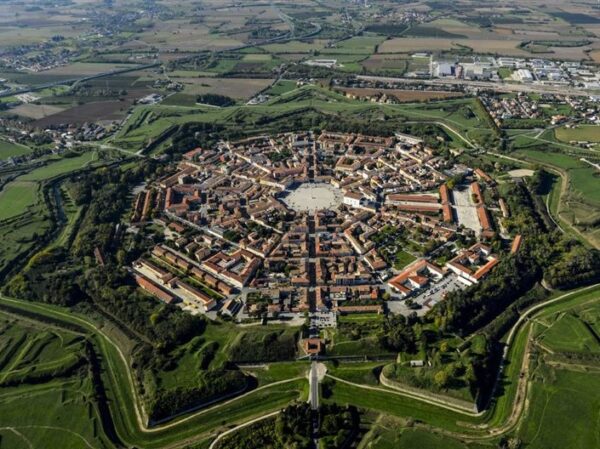
Palmanova represents one of the most successful models of the “ideal fortress city” actually built: a real gem for lovers of architecture, military but not only. Its star shape, with nine points all alike, is in fact a hymn to urbanistic perfection and symmetry. Two defensive lines composed of embankments supported by stones and bricks were built. The structure, designed and then built with great engineering skill, consisted of ramparts (or bastions), curtains, falsebrags and ravelins. These included a moat and a network of underground tunnels that allowed troops to move between the various lines.
The Piazza Grande is overlooked by the main monuments:
The Doge’s Cathedral, with its Baroque facade, one of the most distinguished examples of Venetian architecture in Friuli Venezia Giulia;
the Palazzo del Provveditore Generale (1598-1611), another symbol of civic power, now the Town Hall;
the Loggia della Gran Guardia, which housed the guardhouse protecting the provveditore;
the Loggia dei Mercanti;
the Palazzo del Monte di Pietà, built in 1666 to help the neediest population
The Bastions and the system of galleries are of great historical and artistic interest: two defensive lines with bastions and ravelins and within them the whole city. A third wall was added in the Napoleonic era. A system of underground tunnels (some can be visited) was built to move troops and defend the fortress.
Finally, the Great War and Fortress of Palmanova Museum, above Porta Cividale, is worth a visit to discover the military history of the Fortress from its founding to the present day.
FOR MORE INFORMATION AND APPROFUNDATIONS: borghipiubelliditalia.it/borgo/palmanova/





